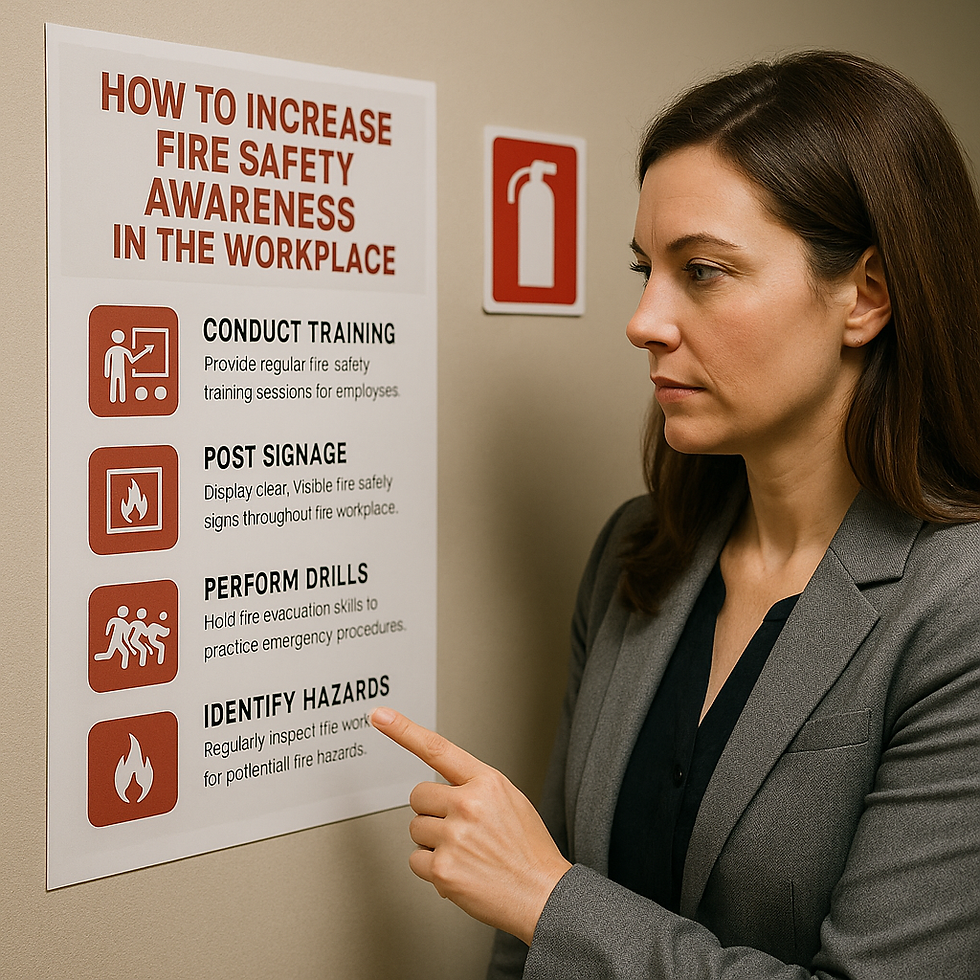Fire Safety Innovation: How to Stop Playing Catch-Up with the Flames
- Pavlo Lapikov

- Jul 7
- 3 min read
Updated: Oct 27

We can land rovers on Mars, teach cars to drive themselves, and invent fridges that talk, but when it comes to fire safety, we still rely on 20th-century solutions for 21st-century risks. Fires don’t wait for innovation, yet most of our buildings still act like the flame is a surprise guest.
We treat fire protection like an accessory. A checklist. Something to paste on after the design is done. But if prevention is the goal, innovation must be part of the blueprint, not a retrofit.
What Can Smart Fire Safety Systems Do That Traditional Ones Can’t?
Smart fire systems don’t just detect danger. They analyze, predict, and react faster than human operators ever could. While traditional smoke detectors blare when it’s already too late, modern systems integrate thermal imaging, air quality sensors, and artificial intelligence to recognize threats before they become disasters.
These systems can identify early-stage ignition patterns, differentiate between harmless smoke and real fire, and activate suppression or alerts with speed and precision. According to NFPA data, early detection and intervention are key to reducing both fatalities and property damage.
How Are Sprinklers Evolving With Technology?
The old sprinkler model was simple: water everywhere. But innovation means targeted suppression. New systems can isolate the fire’s origin point, reduce collateral water damage, and work in tandem with HVAC and alarm systems.
A study by the National Institute of Standards and Technology (NIST) showed that intelligent sprinkler systems can reduce response time by up to 30%, giving occupants more time to evacuate and responders more control on arrival.
What Makes Modern Evacuation Smarter and Safer?
Static maps and outdated signage don’t help when smoke changes the exit path in seconds. Smart evacuation systems use real-time sensors to guide people away from fire, not toward it.
Imagine dynamic signage that updates based on hazard zones, mobile alerts that reroute occupants, and lighting systems that change color to show the safest way out. These are no longer futuristic ideas: they’re available now.
Which Building Materials Actually Resist Fire Instead of Feeding It?
True innovation starts with the materials we use. Fire-resistant insulation, non-combustible cladding, and intumescent paints that expand to block flames are already on the market.
Some companies are even testing self-healing concrete, which seals its own cracks, preventing fire and smoke from penetrating structural elements. If you’re still using untreated plastic panels or composite wood, you’re not just behind, you’re a liability waiting to happen.
Why Should We Design for Fire as a Certainty, Not a Possibility?
Fires are not rare. Electrical faults, lithium batteries, and human error guarantee that fire will eventually test your design. Smart design accepts this reality and prepares for it.
This means zoning based on fire load, installing pressure-managed stairwells, and integrating fire safety professionals early in the design process. Codes define the minimum but true safety comes from building beyond the bare requirements.
Why Should Fire Codes Be the Beginning, Not the End?
Fire codes are written in hindsight, after loss, after death, after lawsuits. If you only design to meet them, you’re designing yesterday’s building.
Forward-thinking professionals see the code as the floor, not the ceiling. Real leaders go further, creating systems and strategies that prevent not just this year’s risks, but next year’s unknowns.
Design Like Fire Is Inevitable, Because It Is
We’re living in a world of growing risks: climate extremes, vertical cities, aging infrastructure. Innovation isn’t optional. It’s the only way forward.
At Fire Heart FSMA, we work with fire safety professionals, engineers, and design teams to push past the minimums and build a future where protection comes first. Through educational content, graphic design, and messaging strategy, we help you communicate safety like lives depend on it, because they do.
Want to get ahead of the flames instead of chasing them? Explore our design services or tune into the Fire Safety Philosophy Podcast to hear real stories, smart solutions, and the big questions safety pros should be asking right now.



Comments